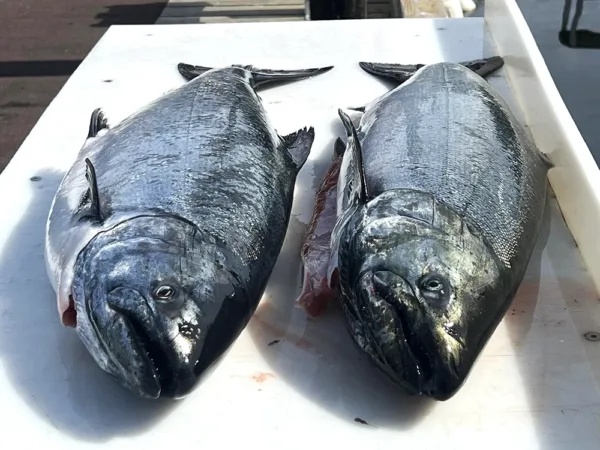Planning an Alaska Trip
Planning an Alaska trip, DIY style, requires a bit more planning and preparation than a fully guided adventure, but the rewards can be well worth it. DIY fishing, for experienced anglers, is often as or more fun than having a guide or charter captain put you on the fish. It’s more challenging, and that’s part of what draws anglers who have been catching fish all their lives, and it can be more fulfilling knowing that your decisions and actions directly resulted in the fish being caught. Plus, as we’ve mentioned many times over, the limits for non-guided halibut anglers in Sitka are far more liberal than for charter boat anglers, and this plays favorably to a certain segment of fishermen who enjoy the ocean-to-table lifestyle.
When to visit Alaska
After figuring out the members of your group, planning an Alaska trip for the DIY angler first starts with deciding when to visit. If king salmon is on your mind, then planning a trip to Sitka in the second half of May and into June is a good place to start. If it’s more coho that you are after, edging towards August is a safe bet. During the entire season, halibut, lingcod, and rockfish are present. You don’t need to worry too much about timing on those species when beginning to plan.

Target Species and Technique
Once you’ve nailed down the group and the dates, the next thought goes towards preparing for the fishing. First prioritize the species you will want to target. Next, determine how you want to fish for them. For instance, if you decide you want to fish halibut, then you’ll want to decide between fishing with bait or jigging. Or perhaps it makes sense to do both. On many successful charter boats across Alaska, both bait fishing and jigging occurs simultaneously. Halibut are drawn by the scent of bait and respond favorably to a moving jig. Decide what rods you want to fish. Check your reels to make sure drags are solid; inspect the main line on each reel and replace with new braid if in doubt. Pre-tie leaders and choose hook style and size for bait-fishing leaders; and assemble an array of halibut jigs.
Saltwater Salmon
Another major consideration for DIY anglers is how to fish for saltwater salmon. Planning an Alaska trip for saltwater salmon typically includes either mooching or trolling. In a pinch, you could use the same rod for either technique, but it would be more prudent to bring a rod designed for each technique. Make a list of terminal tackle you’ll need for each fishing style and begin to assemble the pieces. Part of that process is to determine what type of flasher to troll and if you will troll bait or artificials. Flashers come in multiple shapes, colors, and styles from a range of manufacturers, and experienced anglers usually have an opinion on what works for them. Artificial lures like hoochies and spoons like the Silver Horde Coho Killer are wise additions to an Alaska salmon-trolling kit, and may save the day if bait is scarce or if you run out.
Sitka anglers also target rockfish and lingcod. Both will respond favorably to a jig. And pretty much everything swimming in Alaska eats bait. If you manage to land a kelp greenling, consider using it as bait for lingcod or halibut. Greenling are lingcod candy, and many a large halibut has slurped up a greenling. Plan on using a halibut rod to catch lingcod and either fish for rockfish on one of your salmon rods or bring a smaller stick dedicated to rockfish.
Fish Processing
Part of the process of a DIY saltwater fishing trip is processing the catch. So when planning an Alaska trip gear list for this type of adventure, include a fish-cleaning kit. Anglers have their own favorite knives; regardless of your choice, bring enough knife to handle the big fish you may catch. You may want to consider a longer, stiff-bladed knife and shorter, more flexible knife to handle the range of species. You may also want to consider an electric fillet knife, especially for processing rockfish.
And finally, a kevlar fish glove (or any other type of glove worn when cutting fish) might be a smart addition to protect your non-knife hand from cuts. There’s a good chance that you’ll be doing a lot of fish cutting. We’ve got vacuum sealers for you to use so that you can preserve your hard-earned catch for the year to come.
Now’s the time to get a DIY trip to Sitka booked; call us today at 907-738-9090 for a spot this year or next. Once you’ve picked dates and the clock is ticking, then planning an Alaska trip kicks into full gear and for many dedicated DIY anglers, this part is nearly as fun as the fishing itself.



